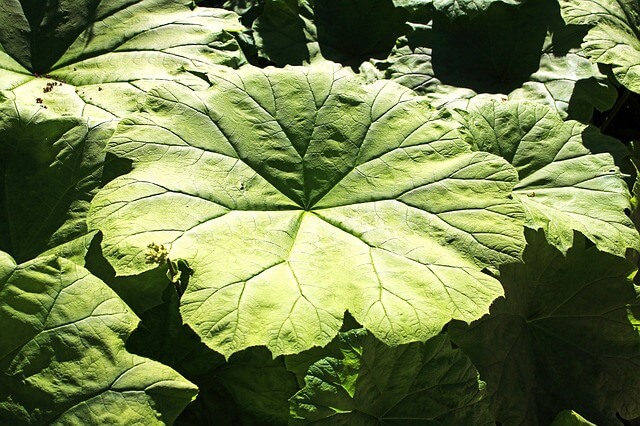If you’re a Healthcare Professional recommending Butterbur (Petasites) to your patients, it’s important that you stay up-to-date on the latest information (see links at the end of this post).
As a chemist, medical researcher, and drug developer, four of the multitudinous questions you ask yourself when trying to decide if you should invest time and money into developing, using, or recommending a particular compound are:
- How likely is it to be effective for the specific condition it’s being considered to treat?
- Are there any known or potential side effects or adverse events that could hypothetically occur?
- How do the answers to question #2 impact the risk/reward profile of the compound?
- Are there any other competing compounds that seem to have similar benefits with lower risk?
Over 27 years ago when we received multiple patents describing the use of a combination of two magnesium sources, high dose riboflavin, and special extracts of feverfew to nutritionally support migraine sufferers, butterbur had not yet been shown in a randomized clinical trial to be effective for migraine sufferers. Of course back in 2002, when the study by Lipton et al was published showing efficacy, I paid a lot of attention to butterbur and strongly considered creating an additional formula or adding it to our existing patented combination (now known as MigreLief with Puracol™). Since the release of our Original MigreLief with Puracol™ we have formulated new products with additional ingredients, for example, Children’s MigreLief, MigreLief+M for menstrual/hormonal migraines and MigreLief-NOW a fast-acting “as needed” formula for neurological comfort, yet none of our products contain butterbur.

Butterbur leaf
It was clear that the response to butterbur was favorable and by not offering it in one of our products we would be losing out on the additional revenue it was sure to generate. Nevertheless, we decided never to use butterbur in any of our products. We could never get comfortable with the fact that we had to rely on a manufacturing process to consistently remove the hepato-toxic and carcinogenic pyrrolizidine alkaloids that are found in unprocessed butterbur. Of course, this was just our company’s decision, and some companies and healthcare professionals used or recommended butterbur. In fact, the American Academy of Neurology and the American Headache Society supported butterbur at one time before they withdrew there support in 2015 due to safety concerns. As healthcare professionals, it is important to stay current on as much of the medical literature and reporting as possible.
In the last few years, much new information has surfaced regarding butterbur and we are providing you with links to that third-party information to enable you to make the best decisions for your patients (see below).
To the Best of Health,
Curt Hendrix
Chief Scientific Officer, Akeso Health Sciences
RESOURCE LINKS FOR BUTTERBUR:
2024 Medical News Today – Butterbur and Migraine
In the past, the American Academy of Neurology (AAN) recommended butterbur in the treatment of migraine to help reduce the frequency of episodes. This is because previous research suggested it may be a safe and effective treatment for migraine.
However, in 2015, the AAN retracted this guidance due to the potential risk of liver toxicity.
This is because some butterbur products contain chemicals called pyrrolizidine alkaloids (PAs). These chemicals can damage the liver, cardiovascular system, and lungs and may also be carcinogenic (cancer-causing).
Additionally, while the National Center for Complementary and Integrative Health notes that people should only consider butterbur products that have been processed to remove PAs and are labeled or certified as PA-free, some products may claim to be PA-free when they are not.
The NCCIH also highlights that further research into the safety of long-term butterbur use is necessary.
2021 NIH – National Center for Complementary and Integrative Health – BUTTERBUR | What do we know? How much have we learned? What do we know about safety?
2020 NCBI – Butterbur – Continuing Education Activity
“Butterbur (derived from the leaves of Petasites japonicus) is an herbal supplement that has been found to be effective in the prophylaxis of adult migraines in multiple studies. Based on these trials, the American Headache Society gave the herb a level A recommendation and declared it to be effective in the prevention of migraine headaches. This activity reviews the mechanism of action, adverse event profile, toxicity, dosing, and pharmacodynamics of butterbur and the recommended monitoring of patients taking the drug to avoid adverse effects.”
Kaiser Permanente – Butterbur Uses and Warning
2017 “Caution: Due to reports of liver toxicity, butterbur products are being voluntarily withdrawn from markets in the United Kingdom. Based on these reports, butterbur should not be used unless a doctor determines that the potential benefits outweigh the risks. People taking butterbur should be monitored by the doctor for adverse effects.”
Update on the efficacy and safety of Petadolex®, a butterbur extract for migraine prophylaxis – Dr. Joseph M. Prietto.
DovePress March 10, 2014
Migraine Preventative Butterbur Has Safety Concerns
NEUROLOGY TIMES – JANUARY 28, 2015
“…Despite butterbur’s potential efficacy, doubts are increasing about the long-term safety of this supplement given the risk of liver damage and the lack of an actively regulated preparation. Due to the mounting concerns, the American Headache Society is currently evaluating a position statement cautioning against its use.” Migraine Preventative Butterbur Has Safety Concerns
Addressing the Long-Term Safety Aspects of Butterbur Therapy- A Call for Immediate Action
Andreas Schapowal, MD, Ph.D., DSc, Hon
2015 American Academy of Neurology Retires Complimentary Therapy Guidelines for Migraine Prevention Due to Butterbur Safety Concerns
RATIONALE FOR RETIREMENT- The 2012 AAN guideline “Evidence-based guideline update: NSAIDS and other complementary treatments for episodic migraine prevention in adults” has been retired by the AAN Board of Directors on September 16, 2015, due to serious safety concerns with a preventative treatment, butterbur, recommended by this guideline.


